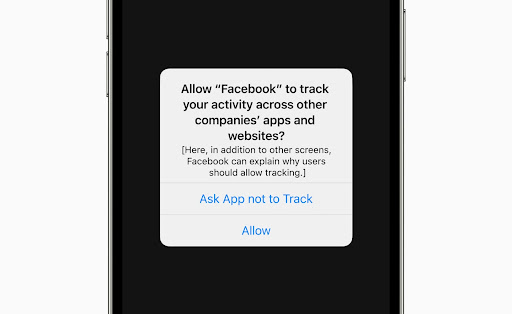What was old is new again? Contextual as a response to App Tracking Transparency
With online users increasingly concerned about their privacy, and governments following the public debate, consumer technology is rationally shifting towards a less user-tracked future. Last in line, Apple’s decision to give iOS users an option not to be tracked in apps is pushing the advertising industry to innovate again and resonate with consumers transparently and ethically.
Advertisers are going to start getting short on cookies in a year or two, but the outcome on Apple’s harvest could be poor this year as well. Serving in-app and cross-app ads has become big in advertising. So why is Apple limiting it? To understand Apple’s decision, we have to start from the beginning.
Every device holds what’s known as “Advertiser ID”, a unique identifier of the user’s device. Apple calls this the “Identifier for Advertisers” (or IDFA). The Android equivalent is called GPS ADID (or Google Play Services ID for Android). The ID helps advertisers to serve specific ads to specific audiences and determine which are best-performing campaigns to iterate later on.
US consumers use their smartphones more than watching TV
The mobile app industry has experienced tremendous growth. App downloads have grown 23.3% since the pandemic, specifically in the work-from-home, food delivery, and fitness segments. With the increased usage of apps, the industry is now expecting to generate over $156 billion in consumer app spending by 2022. 70% of the time spent on digital media is completed in an app.
What is ATT and where’s the hack?
App Tracking Transparency (or ATT) is a new iOS feature that requires applications to ask users permission to track activities across other apps and websites (or in other words, to share IDFA to third-party advertisers and data brokers). If users opt-out of tracking, as Apple calls it, their data can ‘leave’ the device only under limited conditions, none of which are relevant to advertisers.
Boštjan Špetič, CPO at Zemanta, on in-app user privacy concerns
Users would opt-in and share personal data for advertising purposes in exchange for fewer and more relevant ads. But we aren’t there yet. SDKs, ad networks, DSPs, ad servers, publishers, and everyone involved could agree to show fewer ads and value user experience more. I believe we will find a way to better use ad inventory and change the world.
Apple, on other hand, can identify iOS users under any conditions and target ads within its own Apple Search Ads platform (ASA), and it does so in a way that doesn’t meet its definition of tracking. This is the catch. Apple can exempt itself from ATT. Identifying is also not considered as tracking to improve app functionality, for a personalized in-app experience, and for data brokers to detect and prevent fraud.
Targeted advertising increases ROI
Nowhere else but online can advertisers get such a degree of control over their audience. Advertising based on behavioral histories is the engine that brands use to sustain viable unit economics and the freemium business model.
When a mugger sticks a gun in their victim’s face and says, “Give me your money or else,” the second option is merely rhetorical. – Eric Benjamin Seufert
Over the past two decades, third-party cookies have helped advertisers do their job. Small data blocks allowed for the growth of a $478 billion global digital advertising market. But the third-party cookie is going to be deprecated as well. The first change was when Firefox started blocking third-party cookies by default. Google Chrome browser will also succumb to the inevitable in 2023 and ATT could expand targeting limitations even further.
Todd Sawicki, CEO at Zemanta, on user tracking
The cookie ID is not going away so quickly and advertisers can still track in browser-based systems. In the long term, more websites will try to go towards logins. If a user logs in to a website or an app, you can build a profile based upon that since users usually agree to terms and conditions that include profile matching.

ASA is cutting a large portion of in-app advertising
Apple’s own network, Apple Search Ads, is challenging big brands to move from other networks to this for ads to drive app installs. Since Apple made its ATT privacy policy mandatory, Apple’s 2022 fiscal year revenue from ASA might reach $5 billion, and Evercore ISI estimates that it might reach $20 billion by 2025. This would represent 17% of Apple’s services revenue. And as we have learned, Apple adopted ATT not necessarily for user privacy concerns but mainly due to competitive relationships with Facebook and Google. ATT has caused almost $10 billion of ad spend to move away from Facebook, Google, Snapchat, and other app-based marketers.
According to Adjust, roughly 20% of iOS users cannot be tracked any longer across apps.
SKAdNetwork as a limited solution
Apple has offered a limited solution to ATT: a sandbox that allows platforms and advertisers to continue attributing mobile app installs when the IDFA is not present. Apple hides the identity of the user and communicates that conversion to the advertiser without knowing the identity or when it happened. This helps advertisers to measure which campaigns are most effective to some extent.
But the scope of the SKAdNetwork postback is limited by several design choices that render it insufficient as a measurement tool. It lacks critical granularity, and its timer system is unnecessarily convoluted.
Big players in the market have been challenged already
Most large ad platforms were seemingly caught flat-footed by ATT; Facebook perhaps more than any other large digital advertising platform. Since ATT took effect in late April, Facebook has experienced steadily worsening data loss as iOS users have adopted the update. Opt-in rates among US Facebook and Instagram users are low, cutting off Facebook’s ability to track web or app conversions and activity by a large majority of iOS users.
As AdExchanger reports, Zynga is having its best revenue and audience growth year since the company was founded in 2007 despite ATT. The social game developer grew its advertising business 99% year-over-year in the third quarter to $134 million.
Instead of cookies and apples, let’s feed on contextual!
IDFA may eventually die out. But if advertisers get conversions without knowing the source, they can still try and figure out the user identity with other variables, such as IP addresses, OS versions, etc. This method is called probabilistic conversion tracking and it can be unique enough to provide a sense of identity. SSPs are already sending a lot of insightful information about a user and placement in a bid request to DSPs. Advertisers can, therefore, still measure attributed installs as they did before ATT, without relying on SKAdNetwork.
Zemanta is an engagement-based DSP at its core and its algorithms are successful most of the time in finding a match between users, their interests, and content on the open web without the need to buy a lot of impressions to get their click. Zemanta also doesn’t build user profiles. Its in-house Zemanta pixel stores unique user IDs in the first-party cookie which helps to retarget without violating ATT rules.
15.3% of Zemanta campaigns are running with in-app ad serving.
As targeting becomes less precise, the biggest players are building their first-party networks and audiences that could drive higher CPA costs. This can be an opportunity for advertisers to start exploring other channels. Now, more than ever, it’s probably time to look at the open web to maximize ad campaigns.
Todd Sawicki, CEO at Zemanta, on advertising in the future
The way advertisers work has to evolve. They have to look at all channels and enable all of them. There is going to be a lot of change in advertising over the next 2 years. And ATT is just one of the many. If they want to maintain current levels of spending and ROAS, the open web is probably the better bet right now.
Contextual works better in the open web where Zemanta has always been a pioneer. And Zemanta is expanding to display, video, and other channels even more to get better predictions on various environments. Meanwhile, advertisers can still do first-party and third-party user targeting on the open web. As for that, a combination of the contextual, open web, and multi-channel will be essential for a performance-driven approach.
Conclusion
Online tracking limitations started with ad blockers and then evolved with GDPR and CCPA regulations from 2014 to 2019. Users became aware and worried about their privacy. This Q4 is the quarter where ATT changes are showing an effect. In response, ad tech suppliers, tech giants, publishers, agencies, and advertisers are racing towards the winning technologies that will define the future of online advertising.
Zemanta is welcoming the changes that bring innovation. We believe innovation is born out of necessity. These changes will bring a fruitful outcome to brands, marketers, advertisers, and publishers relying on relevant and engaging content that will match the targeted environment and leverage various formats and channels.
To learn more and start using Zemanta, reach out here.

